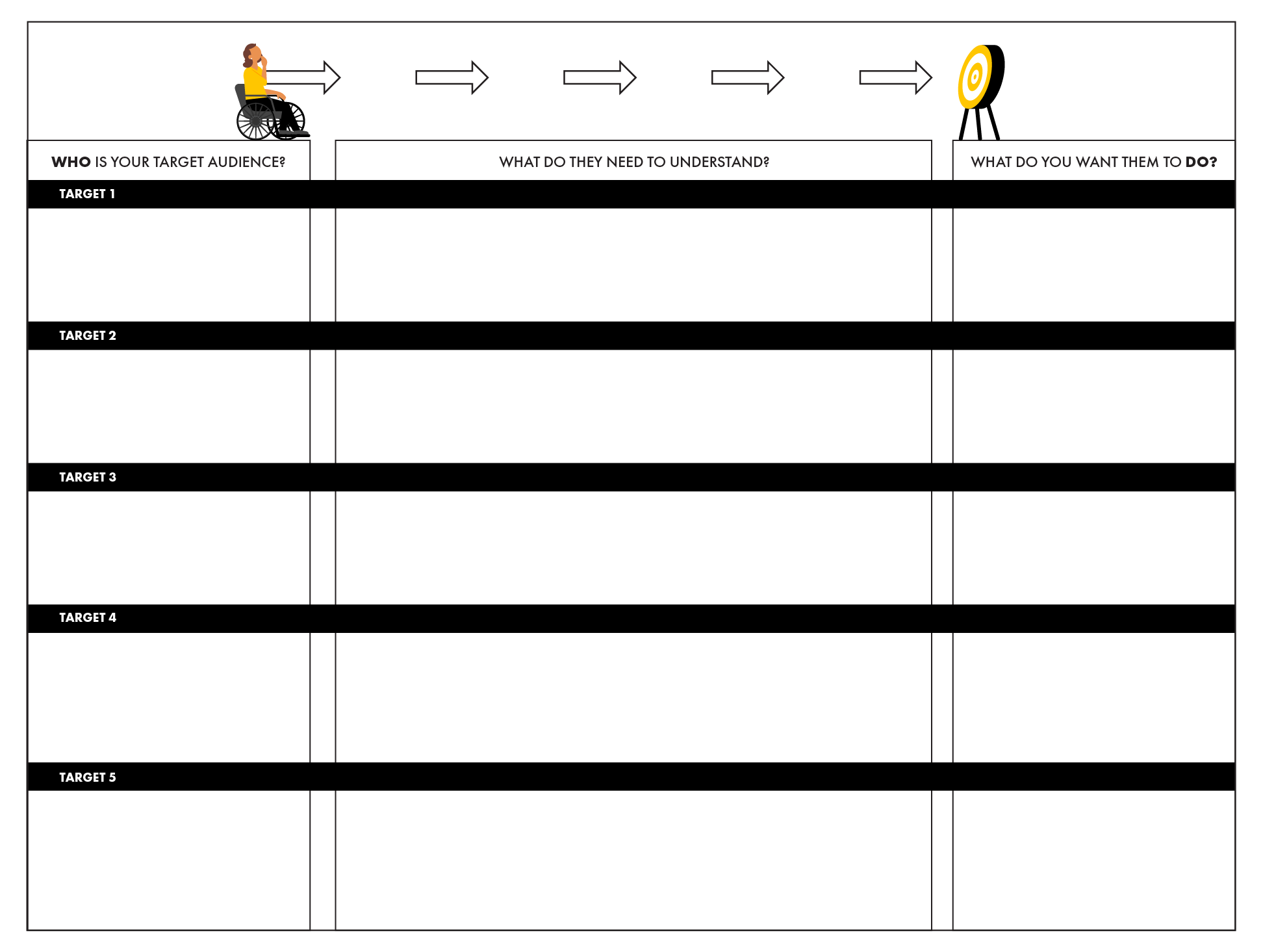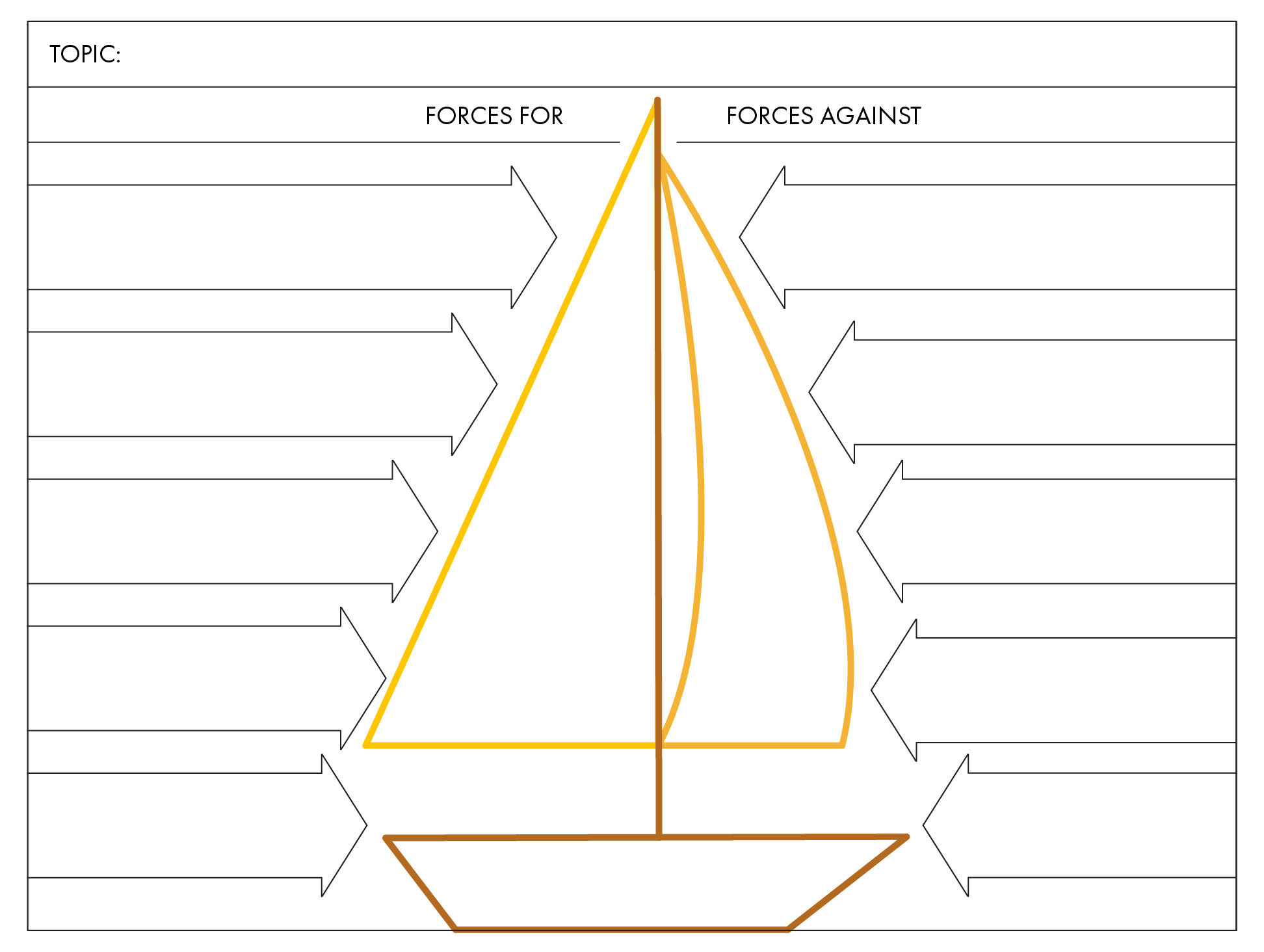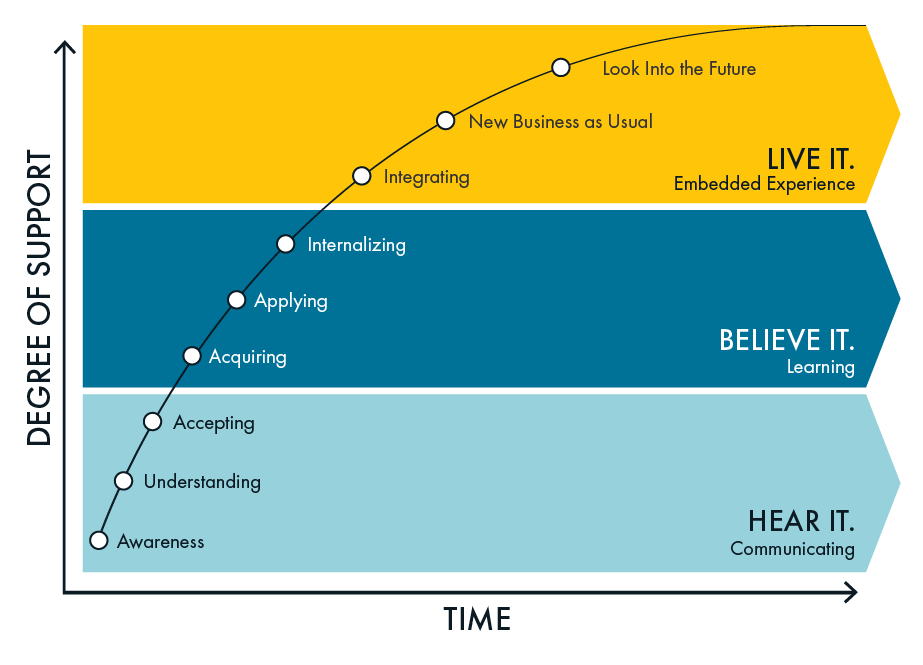If a change management strategy is to be effective, agility is critical. Surprisingly, many change management strategies are not designed to bend and pivot with the times. Turn things around—and move forward—with these five steps toward more agile change management.
If you’ve struggled to make change happen in your organization, have you considered the problem might not be the change itself, but rather an outmoded approach to change? Let’s explore this via a few critical definitions around change management.
Change management can be described as managing the process of transitioning people from the current state to a desired future state. A change practitioner designs and helps implement a change management strategy focused on the people side of change.
Agile change management is the practice of building flexibility into a change management strategy, enabling quick response and adaptation when there are changes to the change plan.
The Case for Agility
So why might you want to tweak your approach by designing an agile change management plan?
Think about it this way: We are each dynamic and fluid organisms, designed to respond and adapt to stimuli and changes in our environment. This is an important contributor to our overall health. When it gets too hot, we produce sweat to cool off. When it gets too cold, we shiver to produce heat.
Organizations (derived from the root word organ) are composed of people and thus are also dynamic and fluid—changes in plans is inherent in how we function.
If a change management strategy is to be effective, agility is critical. It’s a bit ironic that any change management approach would not both welcome and be designed around change itself.
Yet, many change management strategies are not designed to bend and pivot with the changing times.
Don’t Stay Stuck in the Past
The practice of change management has its origins in the pre-agile waterfall era.
Unlike software development, change management has not experienced a significant shift in moving from a waterfall to an agile-based approach. It seems those who intentionally practice agile change management are the exception rather than the rule, and many of the existing tools and processes do not easily transfer into an agile environment.
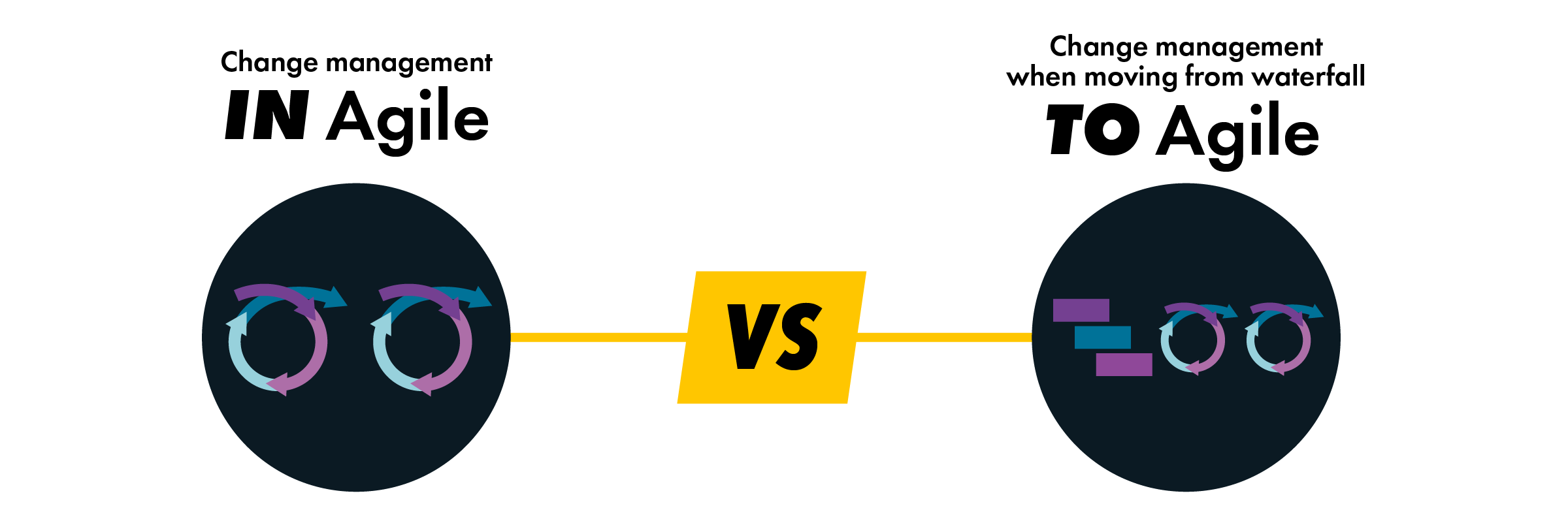
Yet you can learn how to incorporate agility in your change management plan starting with the five suggestions below.
Five Ways to Shift Toward Agile Change Management
1. Integrate with product/project teams
Change management (CM) strategies generally support large-scale projects or initiatives. There is often a project manager overseeing the process across teams, keeping everyone on track with delivering on time and on budget.
To move toward more agile change management, sync up with the PM as early as possible to align on shared goals and ways to integrate project management and CM plans. The PM will have a structure in place for regular project team reviews, where the core team reviews and adjusts all planned work. (For agile teams, this is the sprint planning and sprint review process.) Partner with the PM to ensure all CM events and milestones are included and are being discussed during these regular meetings.
If this is a new idea, you will need to work up front to sell the ROI of the CM strategy. You’ll need to be prepared to demonstrate why the project team should prioritize and include you in the process. Once you’re in, you’ll be able to facilitate and accelerate your CM objectives more effectively.
2. Put people at the center of your design
Change management focuses on the people side of change, but it takes intention to be truly people-centric in your strategy design. Putting people at the center means you should be as inclusive as possible in your approach, which requires a bit more time. Plan for the extra time—it’s worth it.
At XPLANE, we often use our WHO/DO worksheet to kick off our discovery process.
Begin by thinking of all impacted groups (WHO) and the role they will play in realizing the ideal future state (DO). Start to capture what they need to understand and what questions you will need to answer for them to successfully help realize the ideal future state.
Meet with a representative sample from each group to learn more.
Describe the change and what success looks like. Then ask questions to learn more about them, capturing notes:
- How do you feel about this change? Why?
- How might your team/peers feel about this change? Why?
- What do you need to be successful?
- What challenges do you foresee?
- What forces are working in your favor?
- What forces are working against you?
- How do you want to be involved along the way?
- What type of communication/training would be most effective?
- What else is important for us to discuss that we haven’t yet talked about?
3. Anticipate and design for change
Once your CM plan is drafted, layer in agility. Take time to consider various scenarios that might take your plan off course. Do this with people.
XPLANE’s Force Field Analysis worksheet is an effective framework for this.
Learn from each stakeholder group the forces that will both help and possibly hinder change adoption for them and their teams.
Hear from them what changes to expect—and design around that probability. Gather this information from the project management team as well, since they may have unique insights. Then compile all collective “Forces For” and “Forces Against” into one place for review.
Come up with a few options based on various changes/pivots (plan A, plan B, plan C). Capture the decision-making approach you and the project management team will use when (not if) changes happen.
4. Leverage data
As the well-known management consultant Peter Drucker once said, ‘You can’t manage what you don’t measure.’ To navigate change with agility, leverage data as much as possible.
At XPLANE, we like to start by capturing what success looks like within each phase—hear it, believe it, live it—of our Activation Curve.
For each phase, you will want to capture:
- What does success look like, from a people-centric lens?
- How will success be measured? How will you know if it happened or not? Consider both qualitative and quantitative metrics.
Create a simple dashboard (integrated into the project management dashboard if possible). Measure results regularly and use that data to make decisions on where you may need to pivot/iterate throughout the program journey.
Remember to (1) leverage existing project management meetings to share your CM data and (2) invite the project group to weigh in on changes to the CM strategy/roadmap decisions aligned to overall program goals and shifts.
5. Prioritize visibility
The practice of change management is still a mystery to some business partners. Break down existing silos by making the entire CM strategy and status visible to all partners. Use a platform that is easily accessible and inviting to all.
At XPLANE, we leverage MURAL for powerful team collaboration, feedback, and iteration.
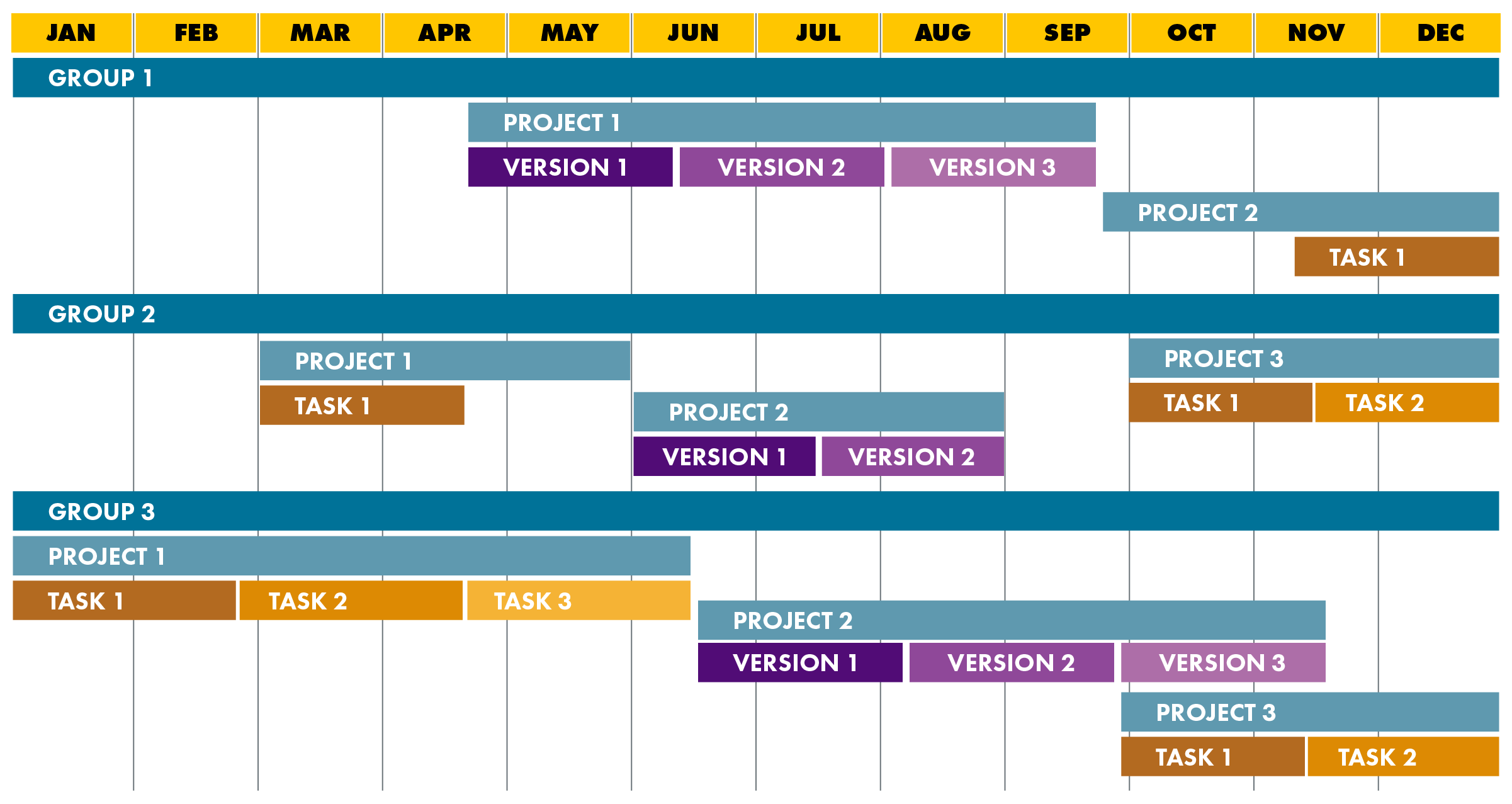
To further prioritize visibility, share not only the CM strategy but also the journey, beginning with a synthesis of your stakeholder interviews:
- Tell the story of how you connected with people and used learnings and insights to inform the strategy design.
- Share how you are defining and measuring success along the way.
- Show when pivots to the strategy are made and the data that informs those decisions.
- Invite feedback to the plan. MURAL makes it easy for collaborators to add notes or questions.
This level of visibility and transparency inspires a sense of shared ownership in the plan. Keep the plan up-to-date and communicate regularly.
Agility is Key to Effective Change Management
No matter where you’re starting, adopting agile change management practices into your change management strategy is a step toward more successful organizational change.
By incorporating these best practices, you’ll start small, learning and making changes as you go—the very essence of agility.
Additional Resources
We invite you to check out these blog posts for further reading on change and change management thought leadership.

